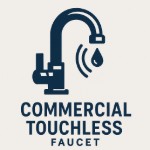Introduction: Integrated Hand Hygiene Systems for High‑Traffic Buildings
This introduction sets the stage for a 50‑page report on sensor‑activated faucets and high‑capacity soap/sanitizer dispensing systems as core building components. It synthesizes specification priorities for the AEC industry and adds guidance for academics, product marketers, and interior designers.
From Products to Systems
Hand hygiene infrastructure now spans dispensing networks and sensor faucets linked by shared operational goals: reduce disease transmission, minimize waste, and streamline maintenance. In high‑traffic typologies—airports, stadiums, higher‑ed, healthcare, quick‑serve—solutions that combine top‑fill reservoirs, multi‑feed supply, and reliable sensing lower total cost of ownership while preserving design intent.
Manufacturers emphasize different levers. Some prioritize labor reduction via large‑capacity, centralized refill systems feeding multiple dispensers; others focus on interaction quality through responsive proximity sensors and intuitive visual feedback. Spec‑grade materials, vandal resistance, and service access are non‑negotiables for public environments.
Scope of This Report
The report evaluates integrated hygiene systems across four lenses:
- Performance & Reliability: Sensor accuracy and latency, dosing repeatability, MTBF, multi‑feed architecture, ingress ratings.
- Design & User Experience: Intuitive sightlines to sensors, ADA reach, coordinated finish families, noise and spray management.
- Sustainability & Compliance: Bulk‑soap savings vs. cartridges, auto shut‑off, flow optimization, maintenance intervals.
- Integration & Operations: Top‑fill access, centralized reservoirs, battery vs. AC, compatibility with custodial workflows and commissioning checklists.
Relevance to Project Phases
- Programming & SD: Map fixture counts, traffic modeling, refill logistics, and custodial routes.
- DD: Select product families; confirm mounting heights, clearances, and power; coordinate countertop penetrations and splash zones.
- CD: Specify model numbers, flow rates, soap types/viscosity windows, and control logic; include O&M, spare parts, and warranty language.
- CA & Commissioning: Verify sensor calibration and dosing; document baseline settings and refill procedures.
- Operations: Track consumables and battery cycles; schedule preventative maintenance to sustain performance.
Audience Notes
For Academics (Building Science/Public Health): Align contact‑event reductions with measured water/soap use profiles and maintenance data in real environments.
For Product Marketing (Manufacturers/OEMs): Connect aesthetics and UX to measurable outcomes—maintenance labor saved, refill frequency, verified user satisfaction.
For Interior Designers: Maintain visual coherence with coordinated finishes and concealed service points; ensure sightlines and lighting make sensor feedback unambiguous.
How to Use This Document
- Start with Technology Overview to compare sensing, dosing, and feed architectures.
- Use the Specification Playbook to translate targets into submittal language.
- Consult Design Patterns for ergonomic, accessible fixture layouts.
- Apply O&M checklists to protect warranties and lifecycle value.
Forward Look
Expect continued convergence of dispenser networks and sensor faucets, with emphasis on centralized refilling, telemetry options, and interoperable finishes. The chapters ahead translate these trends into actionable specifications and details to help AEC teams deliver hygienic, efficient, and visually coherent spaces at scale.

Leave a Reply